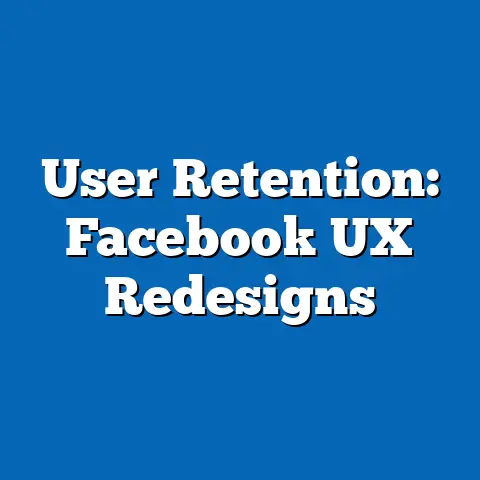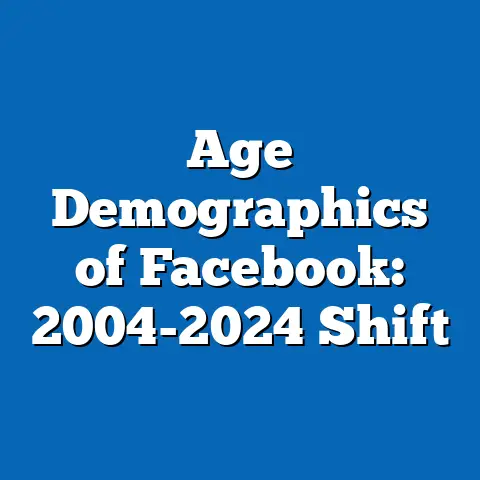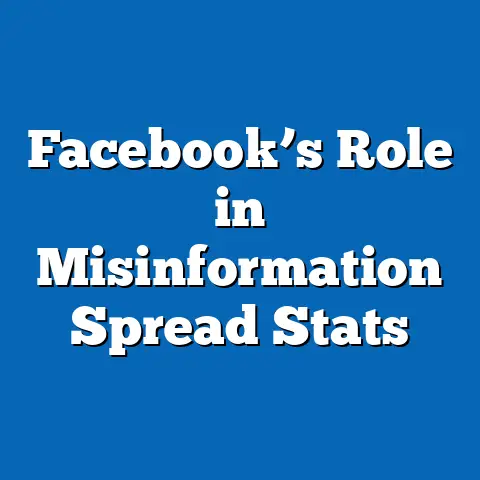Facebook Engagement Stats: Regional Variations
Engagement on Facebook is not merely a measure of user activity; it reflects deeper societal dynamics, including access to technology, cultural norms around communication, and economic conditions that shape internet usage. This article will delve into the defining characteristics of engagement metrics, provide historical context for Facebook’s global expansion, and assess the broader societal implications of these regional differences. By doing so, we aim to uncover patterns that can inform digital marketing strategies, policy decisions, and social research.
Defining Characteristics of Facebook Engagement
Facebook engagement is typically measured through metrics such as post reactions (likes, loves, etc.), comments, shares, click-through rates, and time spent on the platform. These indicators reflect how users interact with content, whether it’s personal posts, brand advertisements, or news articles. High engagement often signals strong emotional resonance, relevance of content, or effective community-building, while low engagement may indicate disinterest, algorithmic deprioritization, or cultural mismatches in communication styles.
Engagement is influenced by a variety of factors, including the type of content (e.g., videos tend to garner more interaction than text posts), the time of posting, and the platform’s algorithm, which prioritizes content based on user behavior. However, beyond these universal factors, regional variations emerge due to differences in internet penetration, language preferences, and cultural attitudes toward social media. For instance, users in regions with collectivist cultures may engage more with community-driven content, while those in individualistic societies might prioritize personal expression.
It’s important to note that engagement is not a monolithic concept; it varies not only by region but also by demographics such as age, gender, and socioeconomic status within those regions. This article will focus on macro-level regional trends while acknowledging the diversity of user experiences within each area. By dissecting these metrics, we can better understand how Facebook functions as both a global connector and a localized tool for expression.
The platform’s growth mirrored the rise of internet accessibility in the late 2000s and early 2010s. In North America and Western Europe, where internet infrastructure was already robust, Facebook quickly became a dominant social network. Meanwhile, in regions like Asia, Africa, and Latin America, its adoption coincided with the proliferation of affordable smartphones and mobile data plans, particularly after 2010.
Significant events shaped Facebook’s regional penetration. For instance, the Arab Spring (2010-2012) highlighted the platform’s role in political mobilization in the Middle East and North Africa, boosting engagement as users shared news and organized protests. Conversely, in countries like China, government censorship led to the platform being blocked since 2009, creating a vacuum filled by local alternatives like WeChat.
Methodology and Data Sources
To analyze regional variations in Facebook engagement, this article draws on a combination of quantitative data from industry reports, academic studies, and qualitative insights from cultural analyses. Key sources include Statista, Hootsuite’s Digital 2023 Report, and Facebook’s own transparency reports, which provide metrics on user activity and demographics. Engagement data is segmented into major regions: North America, Europe, Asia-Pacific, Latin America, Middle East and North Africa (MENA), and Sub-Saharan Africa.
Qualitative data is sourced from case studies and expert opinions on regional internet culture, ensuring a nuanced understanding of statistical trends. While global averages provide a baseline, this analysis prioritizes comparative insights to highlight disparities and commonalities. Limitations include the potential for underreported data in regions with restricted internet access and the evolving nature of Facebook’s algorithm, which may skew engagement metrics over time.
Regional Variations in Facebook Engagement
North America: High Access, Moderate Engagement
North America, particularly the United States and Canada, boasts some of the highest internet penetration rates globally, with over 90% of the population online (World Bank, 2022). Facebook engagement in this region is characterized by a mature user base, with many individuals having used the platform for over a decade. As of 2023, the U.S. alone accounts for approximately 240 million monthly active users (Statista, 2023).
However, engagement rates—measured by interactions per post—are relatively moderate compared to other regions. This can be attributed to platform saturation, with users diversifying their social media usage across Instagram, TikTok, and other platforms. Content in North America often skews toward personal updates and brand interactions, with video content driving higher engagement than static posts.
Cultural factors also play a role; individualism in North American societies often leads to selective engagement, where users interact only with content that aligns with personal interests or identities. Additionally, privacy concerns and algorithm fatigue have led some users to reduce active participation, opting for passive scrolling. Despite this, North America remains a critical market for Facebook, especially for advertising revenue, given the high purchasing power of its users.
Europe: Diverse Engagement Amid Regulatory Challenges
Europe presents a varied landscape for Facebook engagement, with Western European countries like Germany and the UK showing high usage, while Eastern European nations lag slightly due to economic disparities in internet access. The region accounts for roughly 400 million monthly active users, with engagement metrics reflecting a blend of cultural and technological influences (Hootsuite, 2023).
In Western Europe, engagement is often driven by community pages and news content, reflecting a cultural emphasis on civic discourse. However, stringent data privacy laws, such as the General Data Protection Regulation (GDPR) implemented in 2018, have impacted how Facebook operates, leading to reduced targeted advertising and, consequently, shifts in user interaction. Users in this region are more likely to engage with content that respects privacy norms, and there is a noticeable wariness toward oversharing.
Eastern Europe, on the other hand, shows higher engagement rates per user, often due to the platform’s role as a primary source of information in areas with less developed traditional media. Political content, in particular, garners significant interaction, as seen during events like the Ukraine crisis, where Facebook became a hub for real-time updates. Overall, Europe’s engagement patterns highlight the interplay between regulation, culture, and historical context.
Asia-Pacific: High Growth, Diverse Interaction
The Asia-Pacific region is Facebook’s largest market by user count, with over 1.3 billion monthly active users, driven by populous countries like India, Indonesia, and the Philippines (Statista, 2023). Engagement in this region is notably high, with users frequently interacting through comments and shares, often on mobile devices due to widespread smartphone adoption.
Cultural norms play a significant role in shaping engagement. In collectivist societies like India and Indonesia, users are more likely to engage with family-oriented or community-driven content, leading to higher interaction rates on personal posts. India, for instance, has seen a surge in engagement since the introduction of affordable data plans by providers like Reliance Jio in 2016, making internet access—and thus Facebook—accessible to millions.
However, disparities exist within the region. In technologically advanced nations like Japan and South Korea, Facebook faces competition from local platforms like Line and KakaoTalk, resulting in lower engagement. Language diversity also affects content resonance, with localized pages often outperforming global ones. The Asia-Pacific region exemplifies how rapid technological adoption can coexist with deep-rooted cultural influences to drive engagement.
Latin America: Social Connectivity and High Engagement
Latin America, with approximately 400 million monthly active users, is characterized by exceptionally high engagement rates, often surpassing global averages (Hootsuite, 2023). Countries like Brazil and Mexico lead the region, where Facebook serves as a primary tool for social connection, entertainment, and even commerce through Marketplace features.
The region’s engagement is fueled by a cultural emphasis on interpersonal relationships, with users frequently interacting with friends’ posts and participating in group discussions. Video content, particularly live streams, garners significant attention, reflecting a preference for dynamic, visually engaging media. Economic factors, such as the reliance on mobile data over Wi-Fi due to infrastructure challenges, also shape usage patterns, with many users accessing the platform through low-bandwidth-friendly features like Facebook Lite.
Political and social issues often dominate engagement in Latin America, as seen during election cycles or social movements, where the platform becomes a space for debate and activism. However, misinformation remains a challenge, with high engagement sometimes amplifying unverified content. Latin America’s trends underscore the platform’s role as a social lifeline in regions with vibrant, expressive cultures.
Middle East and North Africa (MENA): Digital Activism and Connectivity
The MENA region, with around 200 million monthly active users, exhibits unique engagement patterns shaped by political, social, and technological factors (Statista, 2023). Internet penetration varies widely, from near-universal access in the Gulf Cooperation Council (GCC) countries to lower rates in conflict-affected areas like Yemen. Despite these disparities, engagement rates are often high, driven by the platform’s role in information dissemination and activism.
Historically, Facebook has been a catalyst for political change in MENA, most notably during the Arab Spring, when it facilitated coordination and awareness. This legacy continues, with users engaging heavily with content related to social justice and governance. Cultural norms around family and community also drive interaction, particularly in conservative societies where online spaces provide a safe outlet for expression.
Language plays a critical role, with Arabic content seeing higher engagement than English posts, reflecting the importance of localization. However, government censorship in some countries limits access and shapes how users interact, often leading to self-censorship. The MENA region highlights how digital platforms can both empower and constrain engagement depending on local conditions.
Sub-Saharan Africa: Emerging Market with Rapid Growth
Sub-Saharan Africa represents a smaller but rapidly growing market for Facebook, with approximately 250 million monthly active users as of 2023 (Hootsuite, 2023). Engagement in this region is influenced by the expansion of mobile internet, with initiatives like Free Basics by Meta (Facebook’s parent company) providing low-cost access to the platform in underserved areas.
Users in Sub-Saharan Africa often engage with content related to education, entrepreneurship, and community news, reflecting the platform’s role as a resource in regions with limited access to traditional media. Interaction rates are high, particularly among younger demographics who view social media as a gateway to global connectivity. However, economic barriers, such as the cost of data, and infrastructural challenges, like unreliable electricity, can limit consistent engagement.
Cultural diversity across the region means engagement varies widely, with content in local languages and dialects often performing better than generic posts. The rise of mobile money and e-commerce through Facebook Marketplace also drives interaction, particularly in countries like Kenya and Nigeria. Sub-Saharan Africa’s trends point to the transformative potential of social media in emerging markets.
Comparative Analysis: Key Drivers of Regional Differences
Comparing engagement across regions reveals several key drivers of variation. First, technological access is a fundamental factor; regions with higher internet penetration and smartphone usage, like North America and parts of Asia-Pacific, have larger user bases, though not always higher engagement per user. In contrast, regions with emerging digital infrastructure, like Sub-Saharan Africa, show intense interaction despite smaller numbers, as users maximize limited access.
Cultural norms significantly shape how users engage. Collectivist cultures in Asia-Pacific and Latin America prioritize community interaction, leading to higher comment and share rates, while individualistic cultures in North America and Europe may focus on curated, personal content. Language localization further amplifies engagement, as seen in MENA and Asia-Pacific, where native-language content resonates more deeply.
Economic conditions also play a role, influencing both access to technology and the type of content users prioritize. In wealthier regions, engagement often ties to entertainment and brand interaction, while in economically challenged areas, the platform serves practical purposes like education and networking. Finally, political and regulatory environments, from GDPR in Europe to censorship in parts of MENA, create distinct engagement landscapes, highlighting the intersection of global platforms and local governance.
Societal Implications of Regional Engagement Variations
The regional differences in Facebook engagement have profound implications for society, culture, and the economy. At a societal level, high engagement in regions like Latin America and MENA can amplify voices in social and political movements, fostering greater civic participation. However, it also raises concerns about misinformation, as rapid sharing can spread unverified content, particularly in areas with low digital literacy.
Culturally, Facebook engagement reinforces local norms while introducing global influences. In collectivist regions, the platform strengthens community ties, while in individualistic societies, it may contribute to echo chambers as users engage selectively. This duality underscores the platform’s role as both a unifier and a divider, depending on how engagement manifests.
Economically, regional engagement patterns are critical for businesses and advertisers. High interaction rates in Asia-Pacific and Latin America make these regions attractive for digital marketing, though cultural sensitivity is essential to avoid missteps. Conversely, regulatory challenges in Europe highlight the need for adaptive strategies that prioritize user trust and compliance.
In the workplace, understanding regional engagement can inform remote collaboration and marketing roles, as companies tailor communication to local digital behaviors. For policymakers, these trends raise questions about digital equity, privacy, and the ethical use of data, especially in regions where users may be more vulnerable to exploitation due to limited oversight.
Forward-Looking Insights and Uncertainties
Looking ahead, regional variations in Facebook engagement are likely to evolve with technological and societal shifts. The continued expansion of mobile internet in Sub-Saharan Africa and parts of Asia-Pacific suggests sustained growth in user bases and engagement, potentially reshaping global averages. Innovations like augmented reality and AI-driven content personalization could further influence how users interact, though their adoption will vary by region based on infrastructure and cultural readiness.
Regulatory landscapes will remain a key uncertainty. As more regions implement data protection laws or content moderation policies, engagement metrics may shift, either through reduced user trust or altered platform algorithms. Additionally, competition from platforms like TikTok and regional alternatives could dilute Facebook’s dominance, particularly among younger users in North America and Europe.
Climate and economic challenges may also impact engagement, especially in vulnerable regions where access to electricity and data remains precarious. How Meta addresses these disparities—through initiatives like Free Basics or sustainable infrastructure investments—will be crucial. Ultimately, while regional engagement trends provide a snapshot of current dynamics, they are inherently fluid, shaped by an interplay of local and global forces.
Conclusion
This analysis of Facebook engagement statistics across regions reveals a complex tapestry of user behavior influenced by technology, culture, economics, and politics. From the high interaction rates in Latin America to the regulatory constraints in Europe, each region offers unique insights into how digital platforms intersect with societal trends. Understanding these variations is not just an academic exercise; it has practical implications for marketing, policy, and social equity in an increasingly connected world.
As we move forward, the challenge lies in balancing the global reach of platforms like Facebook with the local nuances that define engagement. By acknowledging the diversity within and across regions, stakeholders can foster more inclusive, effective digital spaces. While uncertainties remain, the data underscores a fundamental truth: engagement is not just a metric—it is a reflection of human connection in all its varied forms.






